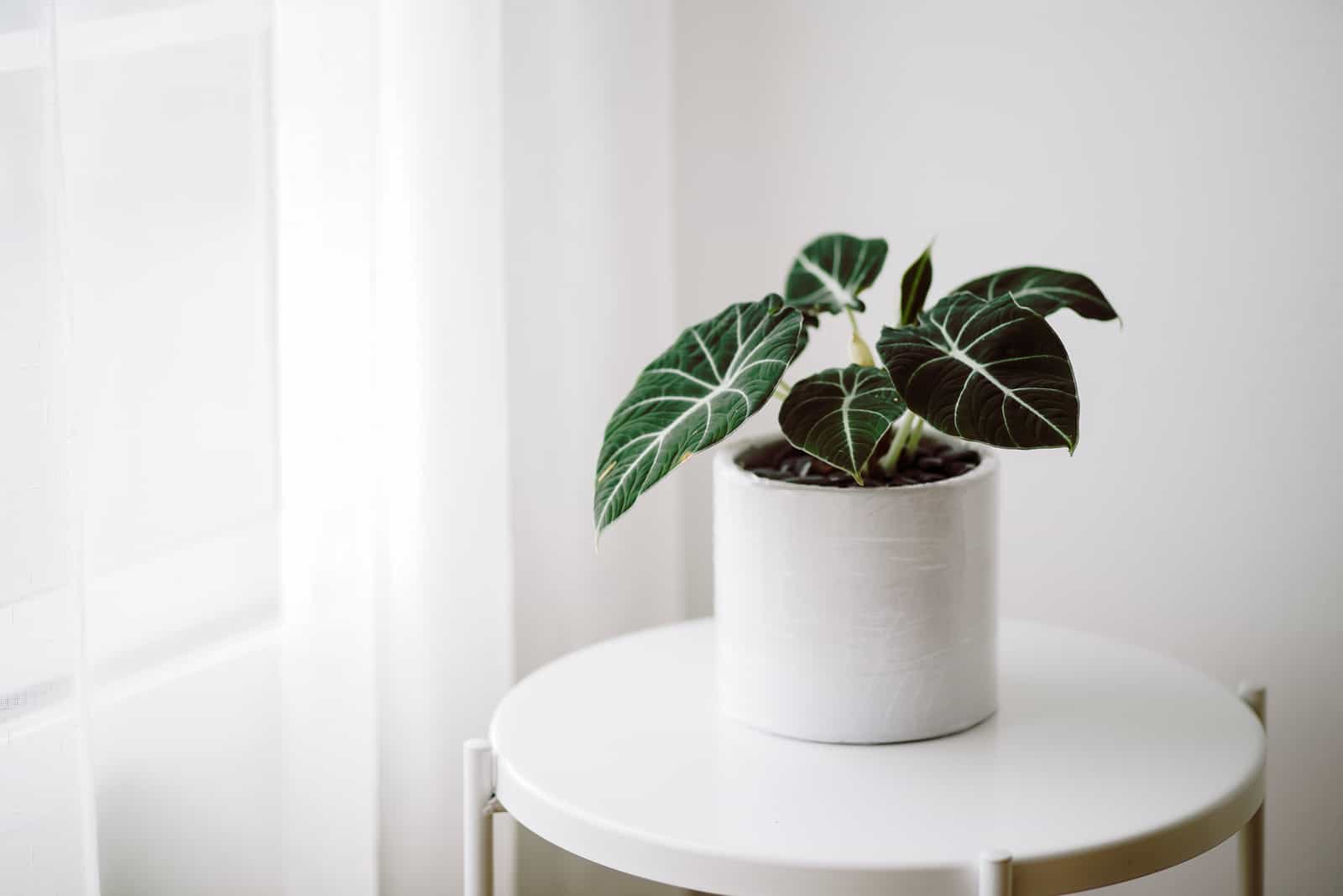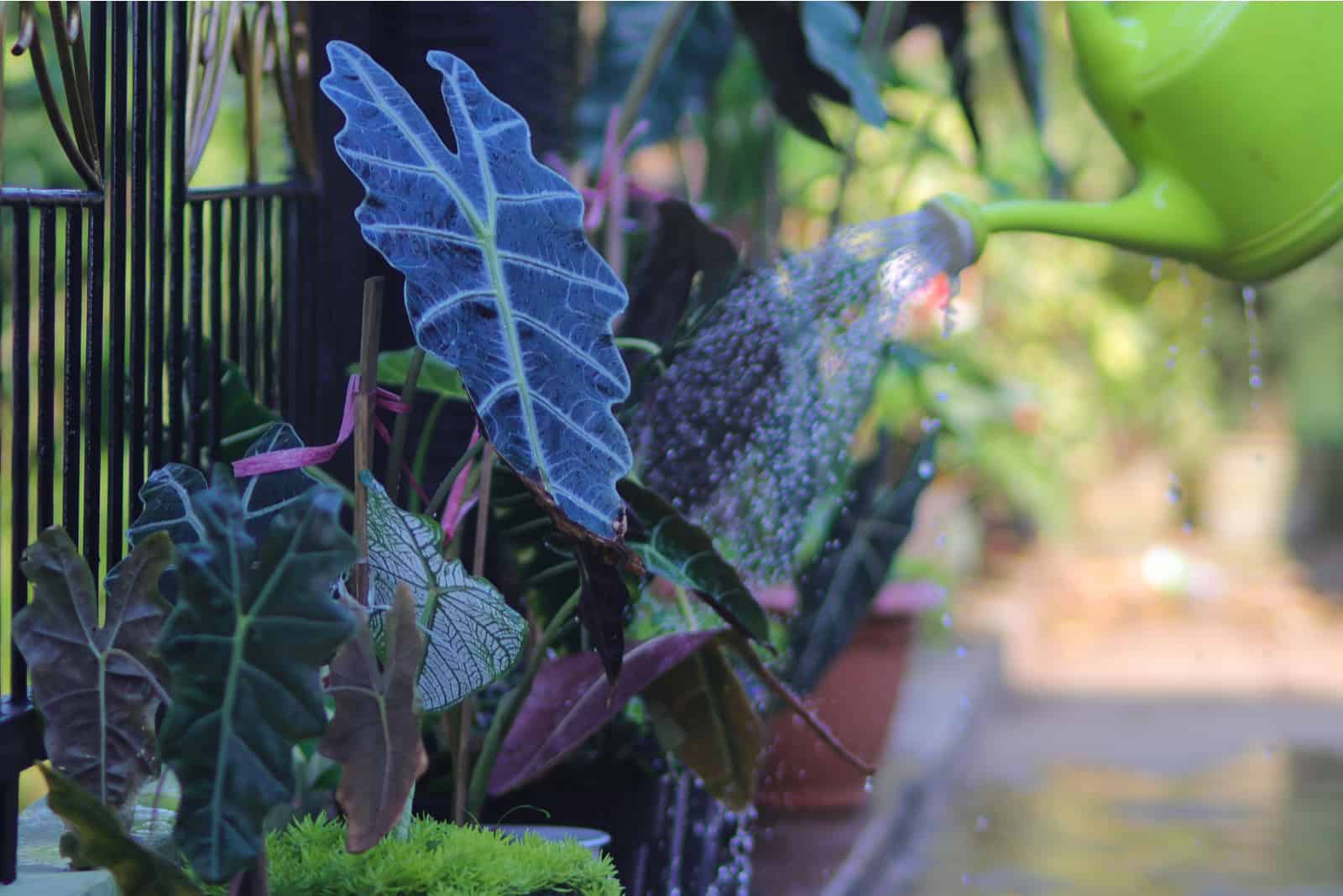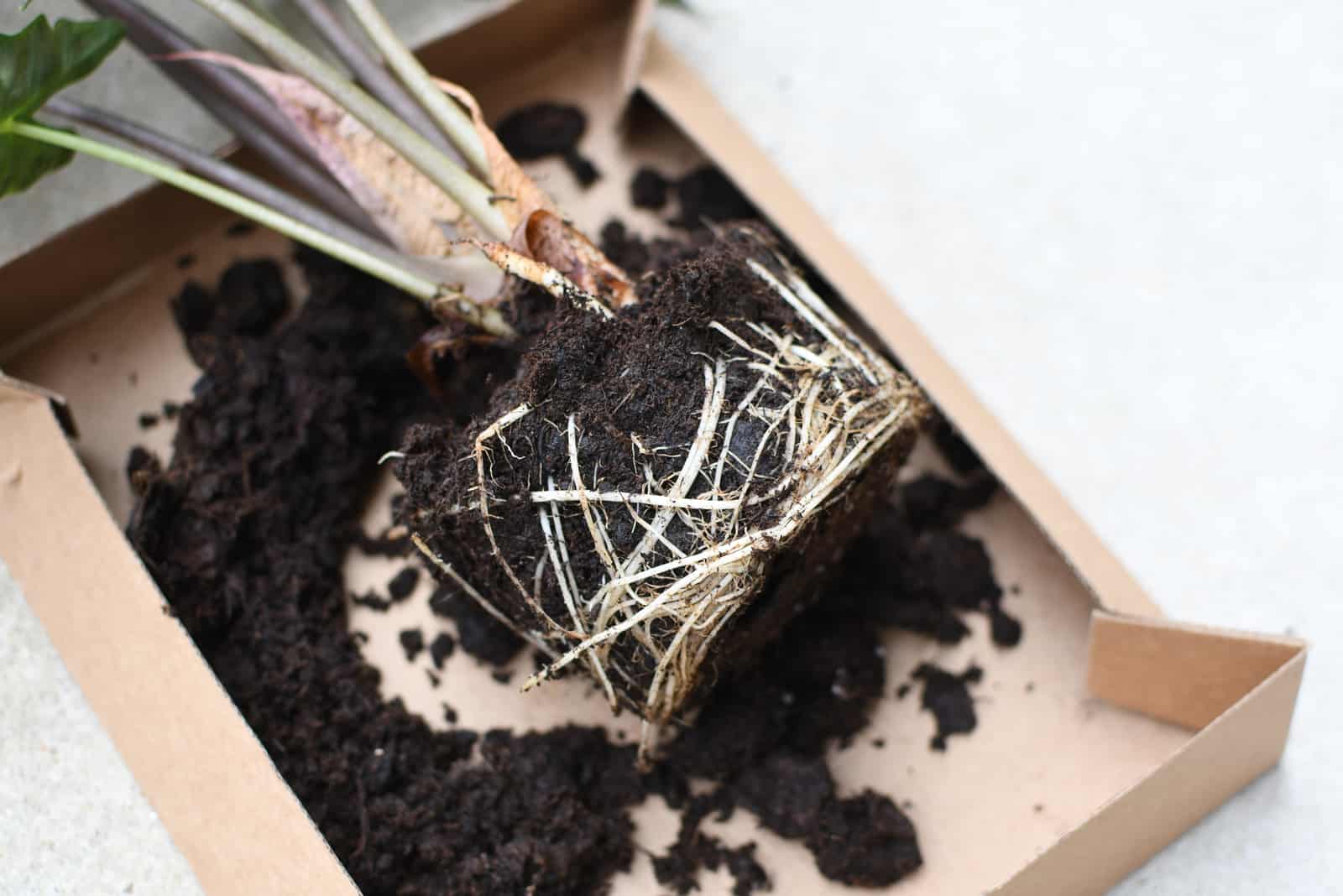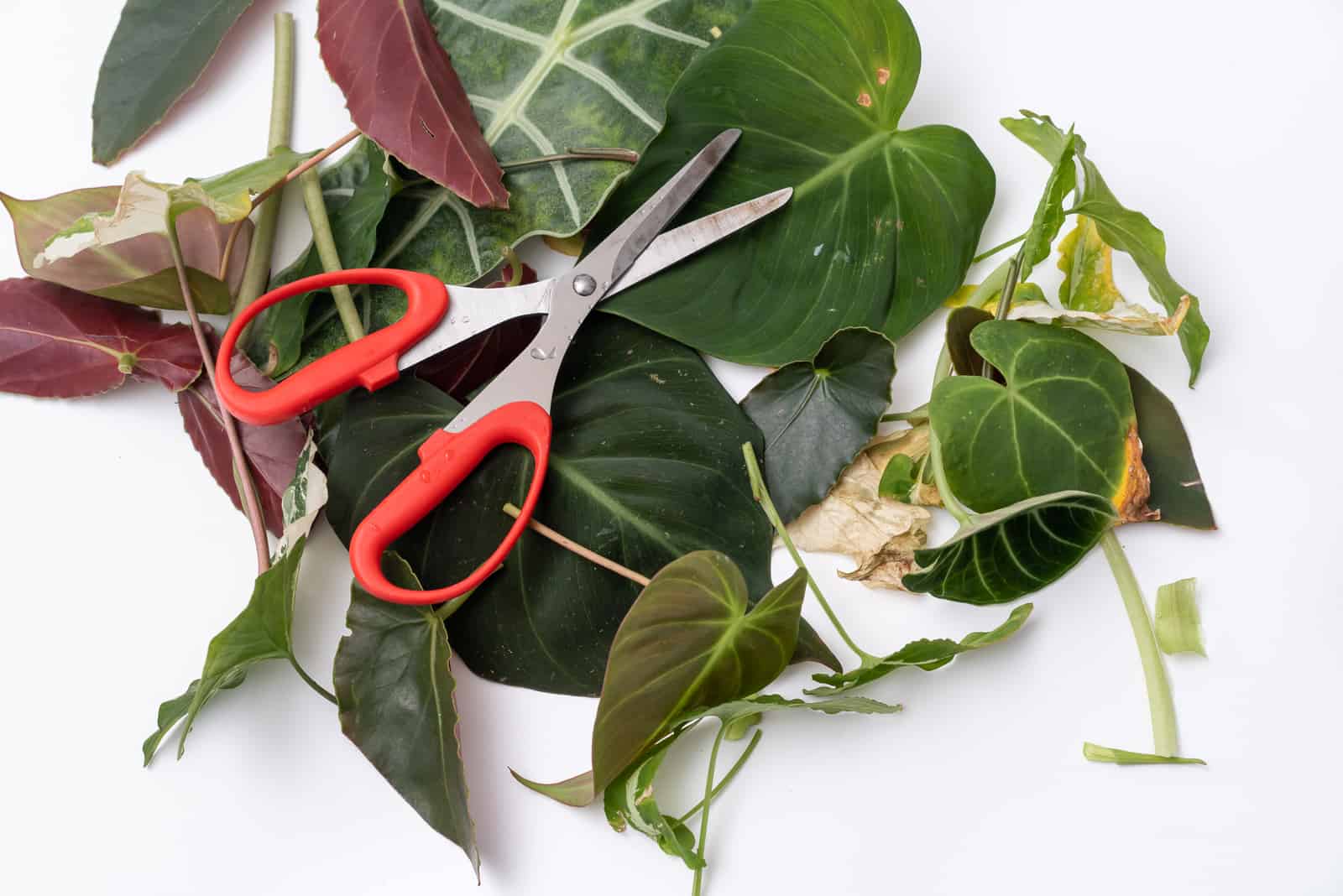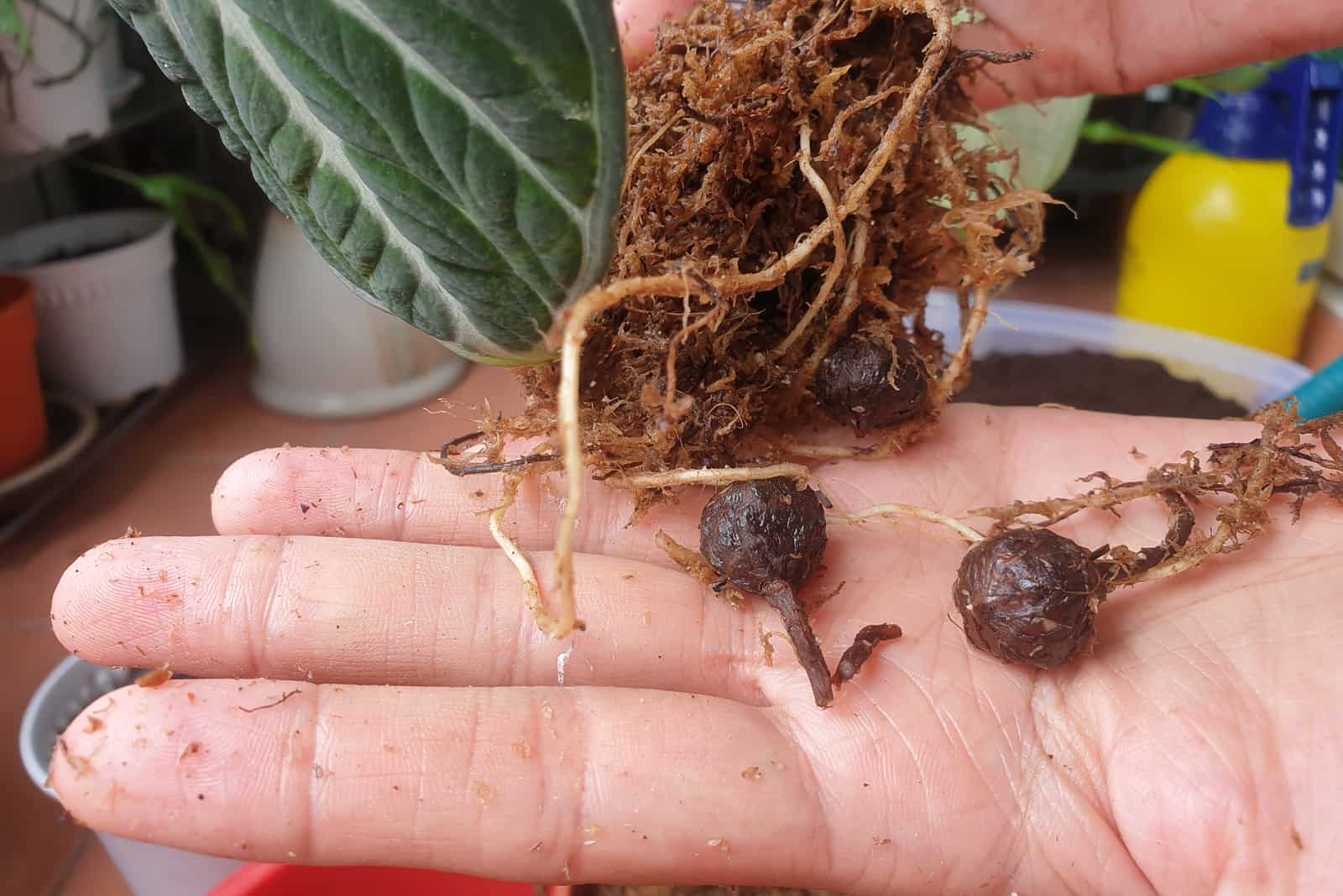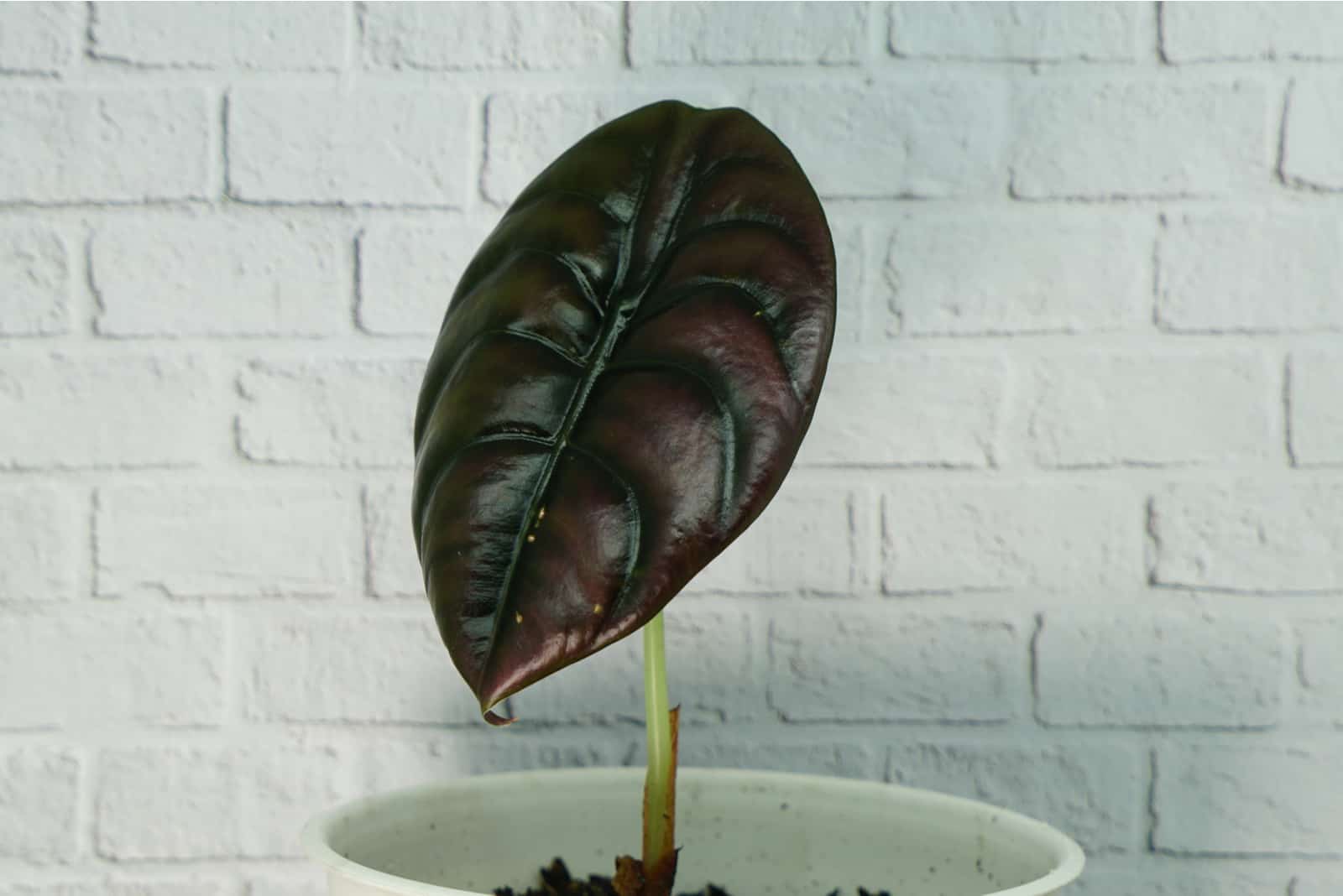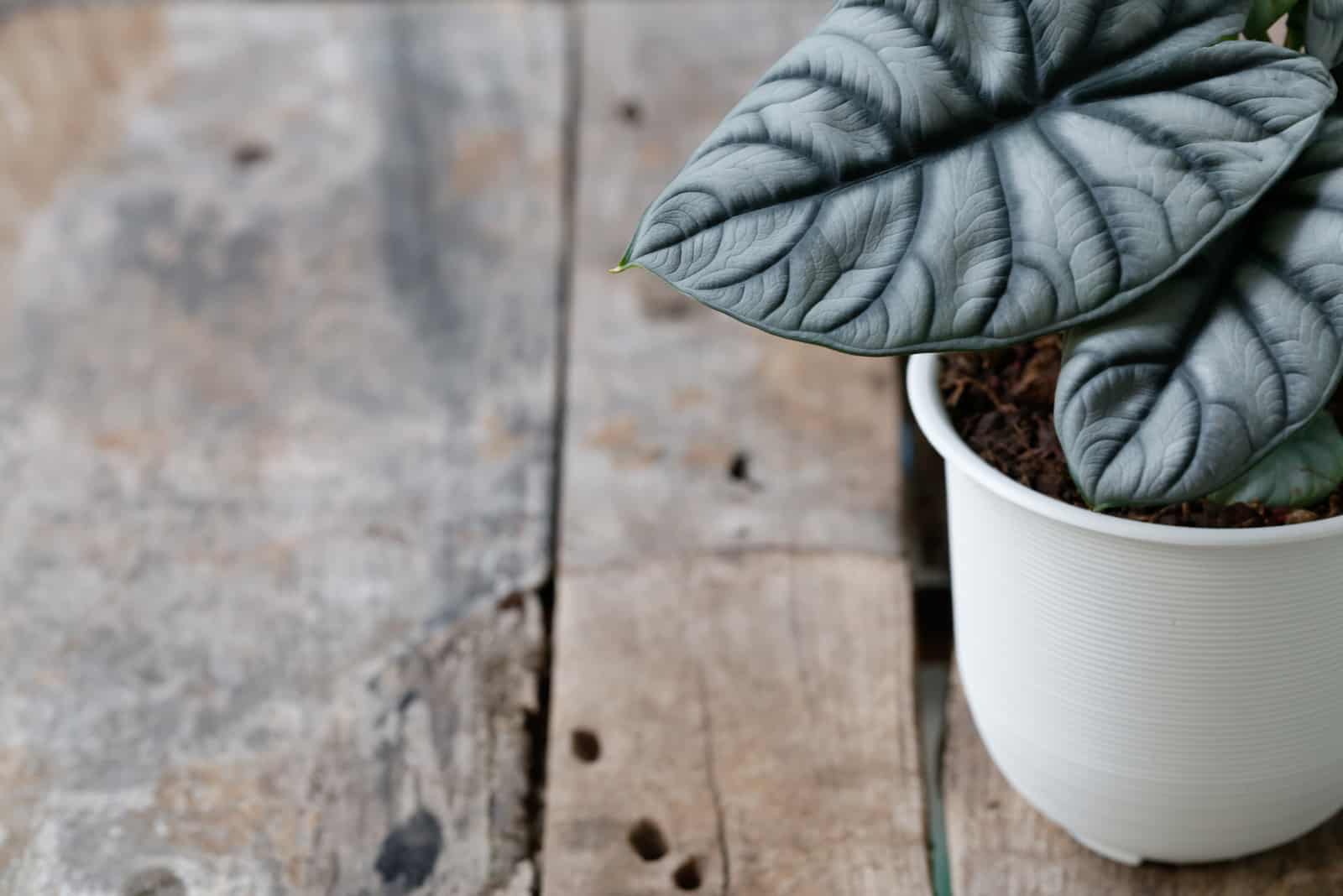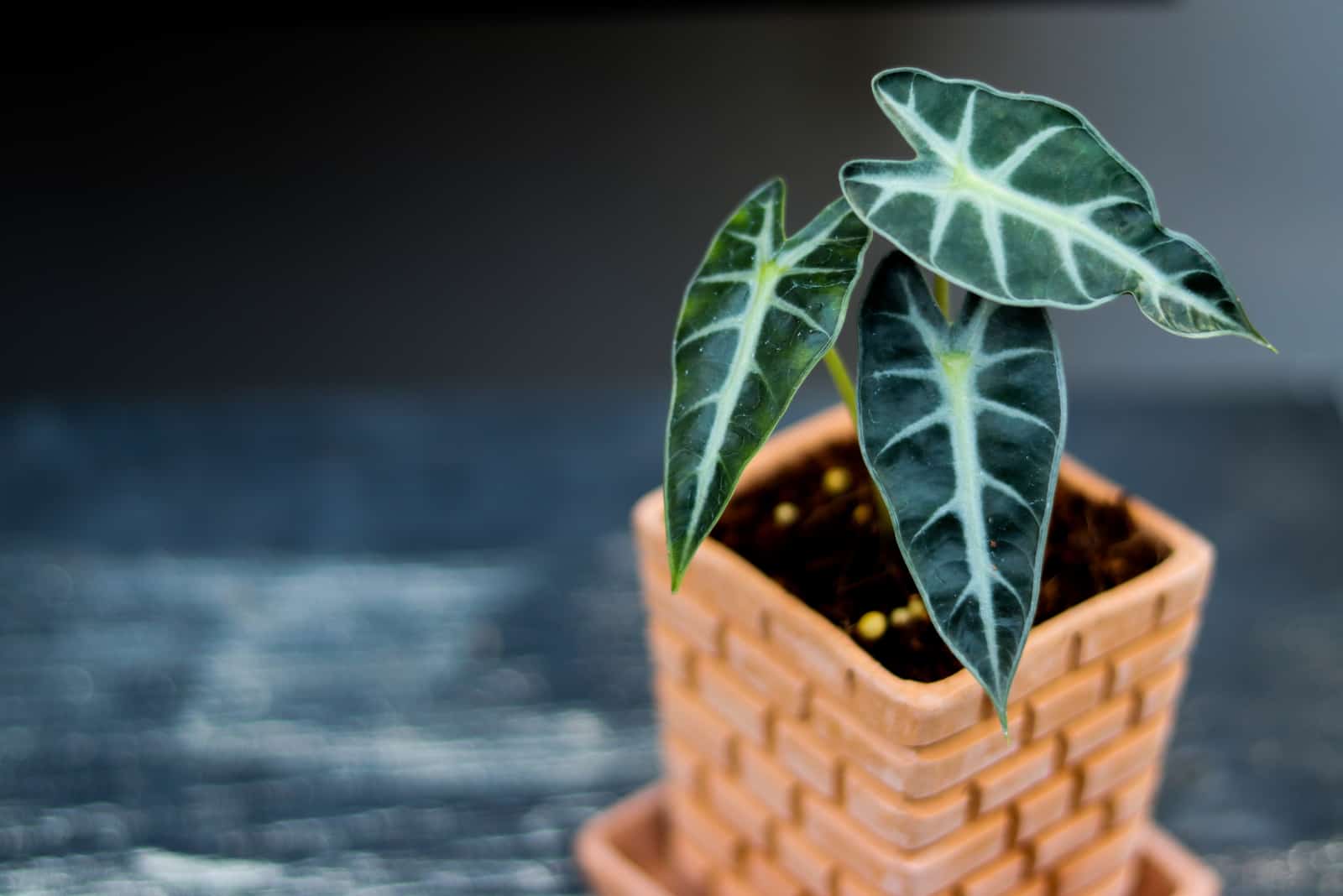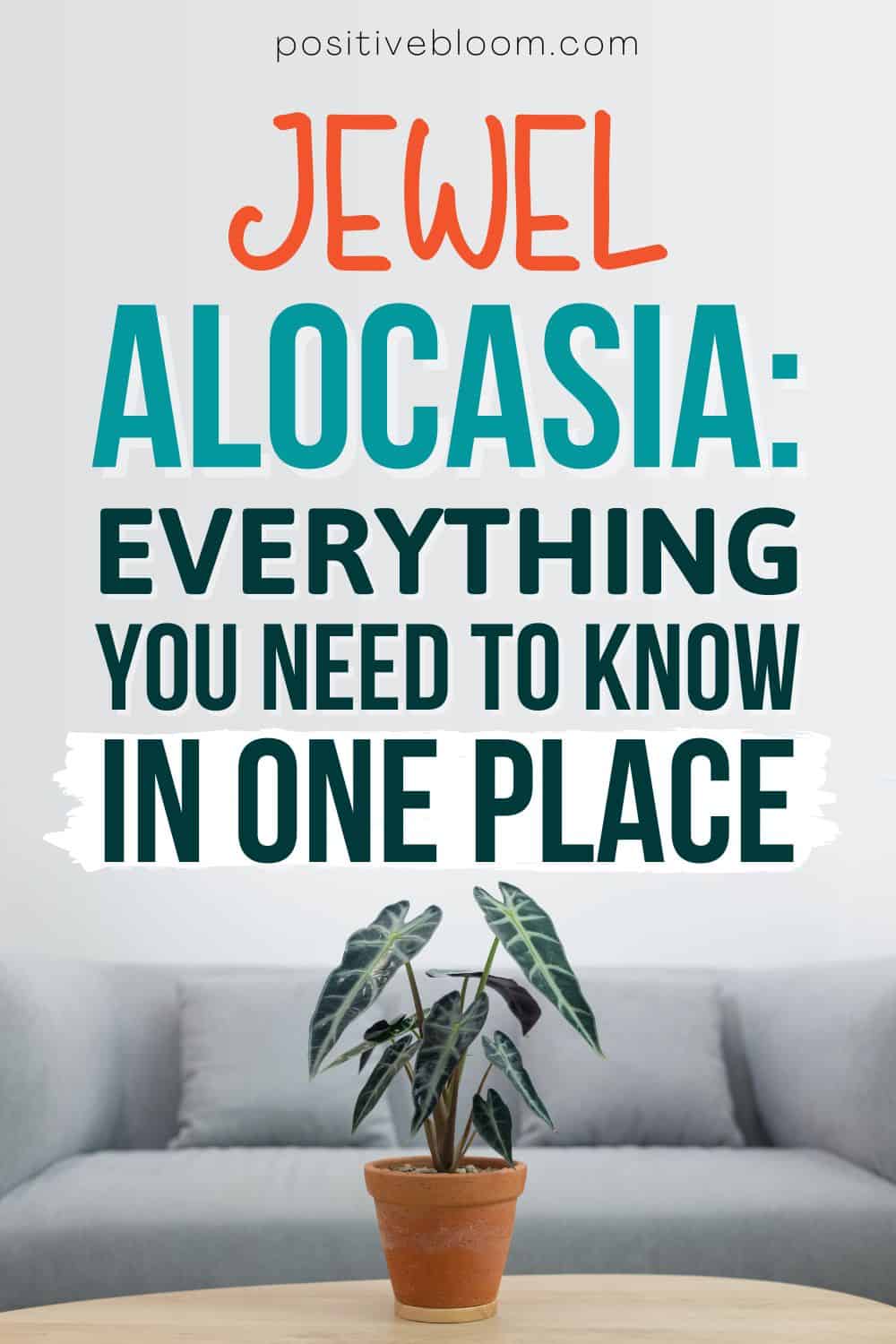If you love Alocasia plants with exceptional variegations as much as me, then we’re both fighting the same battle; we want to collect them, but they are too big for certain places in our homes and would look so good in small pots and terrariums!
Well, thankfully, nature has given us the jewel alocasia to enjoy. It’s your typical alocasia without the size problem. This gorgeous, colorful plant will fit wherever you want, whether it’s in a terrarium on your bookshelf or in a pot on your flower shelf!
Not only are jewel alocasias compact and able to fit pretty much anywhere, but they are also really easy to take care of. So, if you have a busy schedule or are just like me and sometimes forget to water your plants, this is the perfect thing for you.
Jewel alocasias beautify your world and ask for (almost) nothing in return.
Before we get started, let’s take a look at some general information:
[table id=18 /]Now you know some basics about the jewel alocasia, it’s time to learn how to take care of one of your very own!
Jewel Alocasia Care
When it comes to elephant ear plant care, it’s almost always the same for every variety. Whether you have alocasia ‘Purple Sword’, Alocasia sarian, or some other variety, simply give them a little bit of water and plenty of sunlight, and you will start seeing the benefits really quickly!
Light
Jewel alocasias are tropical plants, so they require similar conditions to those found in rainforests. This includes light requirements.
Jewel alocasias thrive best in bright indirect light. They need a great deal of sunlight, but direct sunlight can cause a lot of damage in terms of faded or burnt foliage, so be careful where you leave your plant.
This makes jewel alocasias perfect indoor plants as you have more control over the light they receive.
Putting a jewel alocasia on a north-facing windowsill will do it more harm than good because they will not receive enough sunlight, which can stunt their growth.
The best option is to put it on an east-facing windowsill, but if you like the way your jewel alocasia looks on a west or south-facing window, you will have to move it a few feet away so it doesn’t get sunburned.
Whichever option you choose, we’re sure these gorgeous aroids will look fantastic in your home
Climate And Temperature
We need to keep the rainforests in mind when it comes to the preferred climate of jewel alocasias, as they are used to warmer, tropical climates. Adjust your room temperature to somewhere between 60 and 80°F (15 and 26°C), and your plants will be fine.
Be careful about big nightly drops of temperature as well. You want to make sure that the night temperature is never lower than 55-65°F (12-18°C).
You should also avoid sudden temperature changes and drafts.
Water And Humidity
One thing that we all connect to rainforests, which are the natural habitat of tropical aroids like the jewel alocasia, is water. Plenty of rain means plenty of water.
However, jewel alocasias don’t like sitting in water all day long. You should avoid overwatering at all costs because it leads to root rot and other serious fungal diseases.
On the other hand, you should also be careful not to under water your jewel alocasia. They still need moisture.
The best way to tell when you need to water your plant is by checking the topsoil. If the first 2-3 inches (5-7.5cm) are dry, that’s your cue to water your jewel alocasia. If the topsoil is still moist, then leave it as it is and come back to check on it in a few days.
You should adjust when you water your jewel based on the season. In summer this plant will need slightly more water, but in winter the jewel alocasia falls into dormancy and needs less water.
Watering too much in winter can do more damage than good!
Humidity
Alocasias are tropical plants and they love humid environments. Almost all varieties of jewel alocasia love high humidity, between 70-90%, although it depends on the type of alocasia we’re dealing with.
We don’t live in rainforests, so the humidity of our homes isn’t that high. One thing you can do is use the pebble tray method to increase the humidity and keep your royal alocasia happy.
The pebble tray method is fairly simple. You just put some pebbles (or small rocks) into a tray and pour water over it. Then you put the pot with your jewel alocasia in it on the tray… and that’s it! As the water evaporates, it increases the humidity and your plant gets what it wants.
The other thing you can do is buy an every-day humidifier. Your alocasia and begonia will love it.
Soil And Fertilizer
All aroids and tropical plants need a well-draining substrate rich in organic content, which provides enough aeration for the plant.
You can buy ready-made aroid soil mix or you can make your own. Add some perlite or pumice for drainage, but you still want the soil to retain moisture. This means you should also add sphagnum peat moss to the perlite as this will hold water and allow the plant to absorb it.
All these ingredients are found in aroid potting mix because they hold moisture and nutrients long enough, without clogging your plant with water.
Fertilizer
The most important thing about fertilizing your jewel alocasia is knowing when it is actively growing. Fertilizing alocasias in winter isn’t recommended because the plant enters dormancy.
This can lead to fertilizer burn because plants cannot use the food you give them. Instead, fertilize the alocasia in the spring and summer months for optimal growth results.
I find that balanced, water-soluble fertilizers work best. Dissolve it in water and feed it to your plant once or twice a month. Starting with just once a month isn’t a bad idea, that way you can give your plant some time to adjust.
I recently discovered that you should “clean” the soil about three or four times a year. This prevents a buildup of salts from the fertilizer, and is a good way to avoid giving your plants serious fertilizer burn.
Too much fertilizer salt in the soil can even hinder the production of new leaves, which is why you should consider water flushing.
Water Flushing
• If you haven’t already, put the plant in a pot with bottom holes.
• Pour water on the soil very slowly and carefully. Do this for about 5 minutes. The plant will take what it needs and the rest will be flushed out.
• Next, let the leftover water drain through the holes at the bottom of the container and take the excess salt with it. It will take 10 minutes or so for the entire amount of water to drain.
This does take some time, but your plant will be grateful and when you see those healthy leaves you will be happy as well!
Pruning
The good news is that you don’t have to prune your jewel alocasia to keep it small and help it fit into a terrarium or a particular place you like for it.
However, if you notice your houseplant’s foliage change color to a sickly yellow or see some black or brown spots, it’s a sure sign you need to cut them off as soon as possible.
These leaves are most likely indicators of some fungal disease, and you’ll want to cut them off as soon as you see them so that the disease doesn’t spread.
Repotting
One of the things I like the most about jewel alocasias is their slow growth rate. This means that jewel alocasias don’t require regular repotting like some other plants do.
You won’t need to repot your jewel alocasia more than once every 2-3 years, which is good because they don’t like to be repotted a lot.
However, when you see roots sticking out of the pot, you should repot it immediately, whether the alocasia likes it or not!
The best time to repot your jewel, on the other hand, is during its growing season because it can use the nutrients that come with fresh soil to grow into a healthy plant.
How To Propagate Alocasia
We all know that propagating with stem cuttings is the easiest method. Sadly, this method doesn’t work with jewel alocasias.
For that reason, we have to turn to the plant division method. As jewel alocasias don’t like being moved from pot to pot, the best time to propagate them is when you’re repotting them.
That way you can kill two birds with one stone, and the alocasia won’t feel any additional shock, stress, and anxiety.
Propagation Steps
• First you have to carefully take the plant out of the pot. Remove the excess soil from the roots, and if the roots are all wrapped around the rootball, then it wouldn’t be a bad idea to spread them out a bit.
• Next, you should look for baby plants. These are known as offset and they are basically clones of your plant. This is the easiest way to create the same plant that you already have, so if you don’t like the way it looks, well then you know which ones to avoid.
• After finding the offsets that you want to replant, carefully separate them from the mother plant. Don’t tug too much because you can cause damage to the mother plant. Instead, if you have difficulties with dividing the offsets from the main plant, just cut them off with some shears.
However, you should sterilize the shears so that you don’t transfer any bacteria that can harm the plant.
• Plant the mother plant in a different pot. You can also leave it in the same pot if it didn’t outgrow it, but you should still change the potting mix. Plant the offsets into a different pot, again with fresh, well-draining soil rich in nutrients.
• Now all that’s left is to water them and put them somewhere they can receive plenty of indirect sunlight!
For Those Who Want To Know More
There is so much to learn about the jewel alocasia.
Jewel alocasias come in all different shapes and sizes, let’s find out more!
Alocasias are also known as elephant ear, and one of the largest jewel alocasia varieties is Alocasia Macrorrhiza (Giant Taro). This alocasia would make a great companion to your orchid or anthurium, but it could also easily decorate your house all on its own.
Alocasia is often confused with Colocasia, another plant known as elephant ear, but once you start examining colocasia and alocasia’s differences and similarities, you’ll notice that they are not so difficult to differentiate after all.
In the next section, we will see different types of jewel alocasia and learn more about their individual features so you can choose the right one for you.
Jewel Alocasia Varieties
There are many varieties of jewel alocasia in the world, but here are the most famous and beautiful.
Alocasia Cuprea Red Secret
Everyone who sees this jewel alocasia will learn that love at first sight is a real thing!
This magnificent plant is native to Borneo, but it would like great in your home.
You will simply not be able to look away from its metallic red-green leaves. Its approximate size is 12 inches (30cm), which makes it a perfect ornament for your reading room.
Here’s a video with a more extensive care guide.
Alocasia Nebula Imperialis
No plant can match the beauty of Alocasiaa nebula imperialis. Its silver-green leaves are simply out of this world.
No philodendron or monstera can outshine this alocasia; even alocasia amazonica (alocasia bambino) with its deep green arrow-like leaves and purple underleaf, is far from equal to “Nellie.”
Alocasia Reginula ‘Black Velvet’
Black Velvet Alocasia is another beauty from this genus. Its dark green, almost black, foliage can make every home look like a palace.
It doesn’t grow more than 12-16 inches (30-40cm), which makes it a perfect houseplant.
It would also make a great addition to your flower shelf, and would blend in nicely with any succulents you have.
Alocasia Baginda Dragon Scale
Alocasia Dragon Scale is another gorgeous jewel alocasia. Its ribbed contours on the foliage truly do resemble the scales of a ferocious green dragon.
Silver Dragon is a cultivar of Alocasia Baginda with silver foliage, and Pink Dragon has dark green leaves with pink stems.
These wonderful variegations of jewel alocasia make it so difficult to choose just one!
Alocasia Maharani
Alocasia Maharani is a hybrid commonly known as the Gray Dragon. It is a dwarf variety of alocasia plants that doesn’t grow more than 12 inches (30cm).
This alocasia has silver-green foliage (more green than silver), which sometimes hides pale gray, almost white, flowers.
If you’re lucky, you can admire these leaves in early spring.
Alocasia Rugosa
Also known as Alocasia Melo, alocasia rugosa has such precisely carved foliage that even Rodin couldn’t imitate it.
Nature was rather generous to this plant, and don’t get me started on alocasia zebrina and alocasia reversa. I will just say that reversa’s leaves are unique, with different shades of green, and that zebrina has gorgeous large leaves and zebra-like stems.
Common Problems With Jewel Alocasia
Jewel alocasia are what you may call delicate plants. Pests and diseases attack them with no mercy.
The most common pests that afflict alocasia are mealy bugs, aphids, spider mites, and scale. However, you can get rid of these nuisances with a little bit of neem oil, and if you want to prevent their appearance altogether, you can simply spray your alocasia with some warm soap mix every few weeks.
This also gets rid of the next problem, and that is dust. Jewel alocasias have large, luxurious leaves which need to be cleaned from time to time.
However, be careful to pat-dry the foliage because you don’t want to inadvertently give your alocasia a fungal infection.
The last issue with alocasia are diseases. They are susceptible to leaf spot and root rot caused by overwatering. If, perish the thought, your jewel alocasia gets infected, here’s what you need to do:
• Separate the infected plant from other plants. You will be able to tell the plant is infected if you notice brown and dark discoloration surrounded by a yellow girdle on the foliage.
• Cut off the infected leaves and remove the ones that have fallen off. This will stop the disease from spreading.
• Finally, treat the plant with fungicide and keep your fingers crossed.
FAQ
We have already learned so much about jewel alocasia, and yet there are still more things that need to be covered. We decided the best way to do this is by answering your most common questions.
Let’s begin!
Is Alocasia a rare plant?
Generally speaking, Alocasia is not rare. However, there are some extremely rare jewel alocasia out there that many plant enthusiasts would like to get their hands on.
The rarest of all is the Alocasia Azlanii, also known as Red Mambo. Its deep purple leaves make it the crown jewel of all aroids.
Why are Alocasias so popular?
The main reason for alocasias being so popular is their foliage. It can vary from silvery green to metallic red, purple, and dark green. Some leaves look like dragon scales, whereas others look like arrows. They can be serrated and smooth, variegated or mono-color.
Another reason for their popularity is their low maintenance. Everyone loves plants that are almost self-sustainable, and jewel alocasias just like that.
In Conclusion
We’ve reached the end of our journey, and I hope that you enjoyed it as much as I did!.
Now you know all the most important things about jewel alocasia, you can go buy one and start a new chapter of your gardening journey.
Until next time!
P.S. Remember that the most serious problems with jewel alocasia are caused by overwatering, so if you avoid it, there’s no reason your alocasia shouldn’t last for many years.
Like this post? Share or pin it for later!

